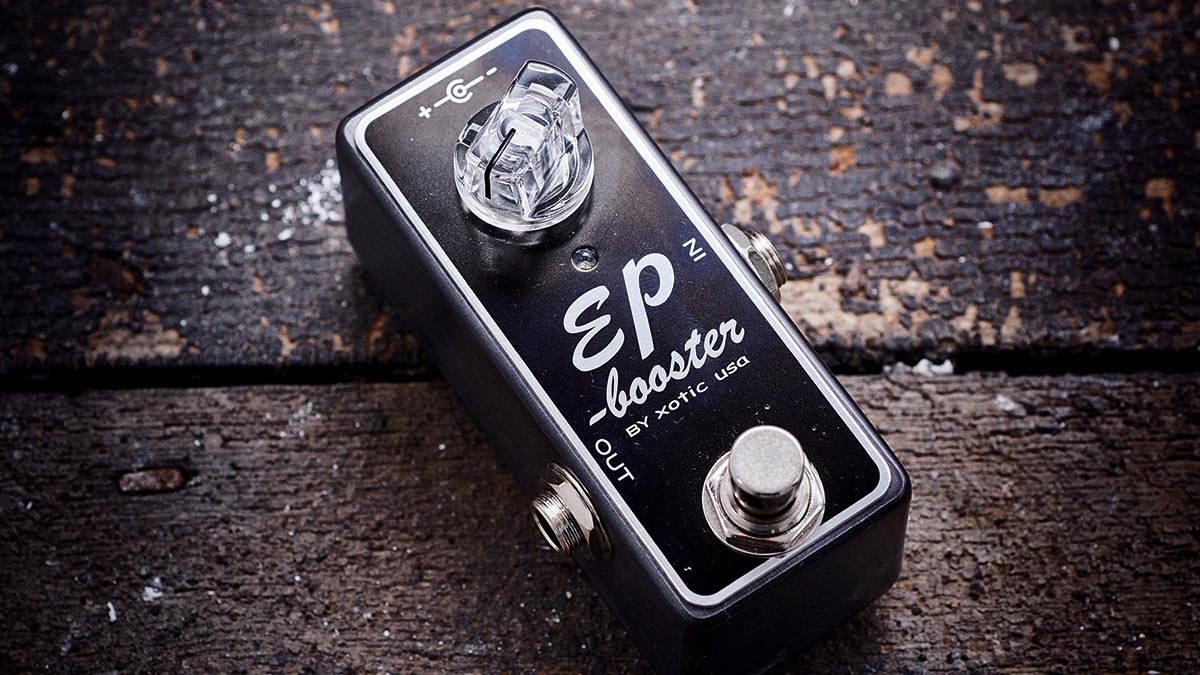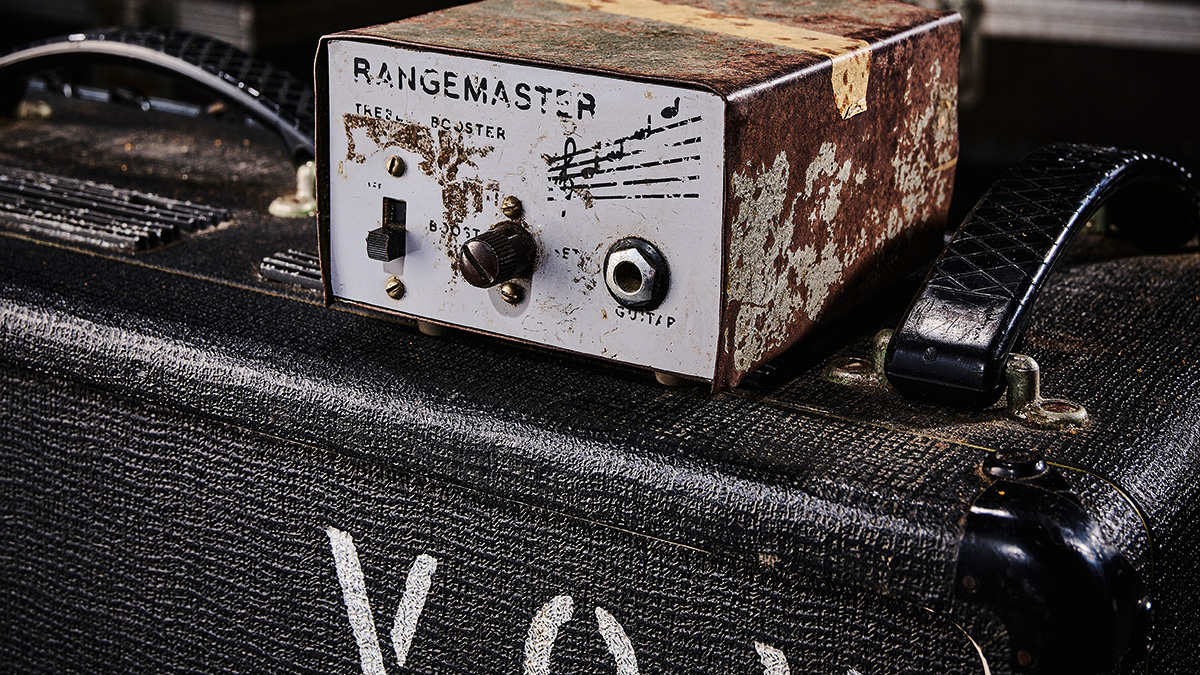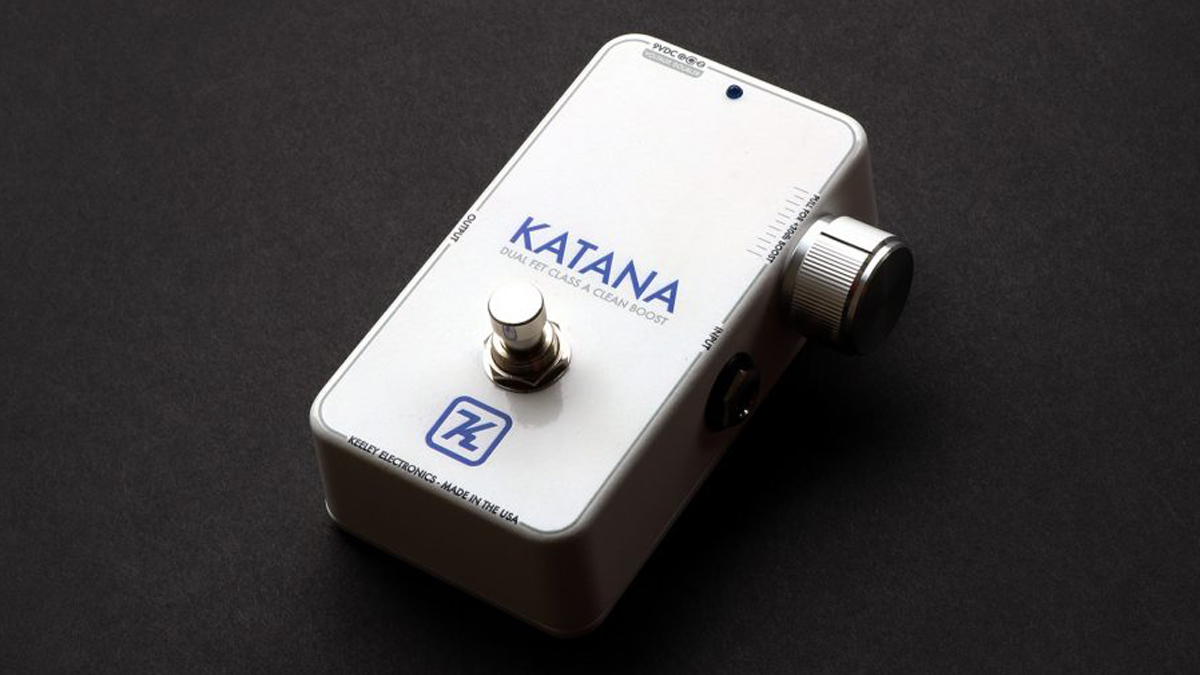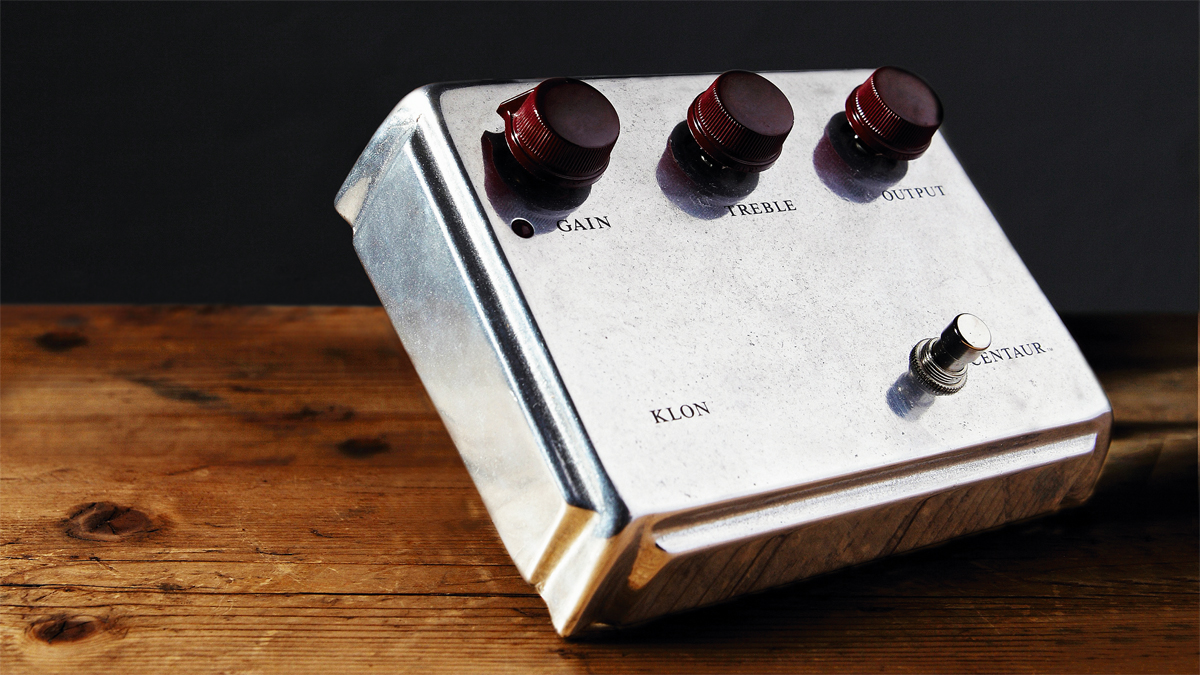
The humble boost pedal shaped the sound of rock guitar as we know it. One of the most useful – and simple – stompboxes a guitarist can buy, a boost can, to put it simply, give you more of what you love about your tone. And, crucially, it ekes more overdrive from your guitar amp, which is where the concept originated.
If you ever get the chance to play through an early amp, such as a 1930s Gibson EH-185 or a late-1940s V-Front Fender Dual Professional, you may be surprised by the ferocity of the overdrive they can generate. Combining them with an early Goldtop Les Paul reveals that proto-metal guitar tones would have been achievable as early as 1952.
There are various reasons that these early amps break up so quickly, but a key factor is the way the input sockets are connected to the grid of the first preamp valve. The ES-185’s microphone input, and all the V-Front inputs, are directly coupled to the grid and there are no grid stopper resistors.
These resistors became the norm during the early 1950s and they’re used to prevent radio frequency interference. But they also dump a fair bit of the guitar signal to ground before it even reaches the valve and they reduce treble. To hear how a cranked Fender V-Front sounds, check out ZZ Top’s Antenna.
By the time rock ’n’ roll was morphing into blues-rock, most amp manufacturers had spent the previous 15 years or so cleaning up their acts. Players needed overdrive and sustain to sound like Clapton and Bloomfield, and they couldn’t achieve that by running a set of single coils into an AC30 or Twin Reverb.
Guitarists soon discovered that bumping up the guitar signal before it reached the amp input ensured crunch would be served and their amps would saturate with harmonic overtones. Some players employed tape echo preamps, such as the Wem Copicat and Roland Space Echo.
Others, including Jimmy Page and Eddie Van Halen, favoured the Echoplex, which derived from Ray Butts’ Echosonic amplifier design. Ritchie Blackmore was partial to the sound of his AIWA TP-1011 tape recorder, but during the ’60s players wanted more compact and convenient solutions – and the era of the treble booster dawned.
Brit Boost

The treble booster really started out as a British phenomenon. The records that UK rockers and blues players were listening to were mostly recorded in the US with bright-sounding Fender amps, but on this side of the pond the Vox AC30 ruled the roost. They had their own classic tone, but even The Shadows found them a bit dark and murky compared with Fenders.
Eventually, Vox relented and developed a Top Boost version of the AC30. The company also marketed modules that could be retrofitted to earlier amps, which opened up the treble and increased gain. But in 1965 Dallas Music Ltd came up with another solution and its Rangemaster Treble Booster was widely adopted by players such as Rory Gallagher, Tony Iommi, Billy Gibbons and Ritchie Blackmore. Rory even showed Brian May how to use one.
Rory and Brian never stopped using theirs, but the most famous recording that’s associated with the Rangemaster may not have featured one at all. Thus far we have studiously avoided mentioning god, or rather Eric Clapton, as he’s more commonly known these days. The presence of a Rangemaster on John Mayall’s ‘Beano’ album is still hotly debated, but the consensus now seems to be that Eric plugged his 1960 ’Burst straight into his KT66-driven Marshall JTM45 and turned everything up full.
Boosterism
The Rangemaster wasn’t a pedal as such, and was designed to be placed on top of an amp. With a sliding on/off switch on the front panel, a single volume control and a hard-wired cable for connecting to an amp, the Rangemaster had a simple circuit that featured a single gain stage courtesy of a Mullard OC44 germanium transistor.
The circuit combined bass roll-off with a maximum boost of 24dB. This boost isn’t flat across the frequency range and when you play a low E, the fundamental frequency remains unboosted and the treble boost becomes more apparent higher up the neck.
Those who still rely on amps rather than modellers may be more inclined towards small valve combos for classic overdrive at practical volume levels
The germanium transistor was biased close to its cut-off point, which causes the signal to compress more on one side of the waveform than the other. This imparts a smooth asymmetric overdrive that progresses into distortion when higher signal levels cause the transistor to cut off.
The Rangemaster’s output impedance is much lower than a passive guitar circuit and is effectively set by the value of the 10k output potentiometer. It’s suggested that this causes the first preamp valve to overdrive in a smoother way and, all things considered, the Rangemaster is a highly coloured boost, rather than a clean boost.
Back Boost
With the vintage focus firmly fixed on guitars and amps, it is undeniable that treble boosters have been somewhat airbrushed from history. They were a crucial ingredient for countless classic guitar sounds, but as pickups became hotter, amp builders started incorporating high-gain preamps and pedal companies such as Ibanez and Boss developed convincingly amp-like overdrives, most players decided that treble boosts had become redundant.
Nowadays, massive amps with switchable clean and high-gain channels seem almost as passé as Rangemasters. Those who still rely on amps rather than modellers may be more inclined towards small valve combos for classic overdrive at practical volume levels. It’s even more common to use a bigger valve amp with plenty of clean headroom as a pedal platform for a variety of overdrive and distortion flavours.
A boost can also be used to provide a lift for soloing without adding overdrive or distortion to the tone, but much depends on the amp’s headroom
As the tables turned, boost pedals started to make a comeback, and a boost is now a standard feature on most pedalboards. It’s worth distinguishing between vintage-style boosts that add specific tonal colouration, and more modern clean boost circuits that are intended to lift levels without altering the sonic character.
Many of these employ op-amps and JFETs, rather than archaic germanium transistors, to achieve a nominally flat frequency response.

Some players use boosts to even up the volume when swapping between guitars with differing output levels. A boost can also be used to provide a lift for soloing without adding overdrive or distortion to the tone, but much depends on the amp’s headroom. And then, of course, you can hit the front of an already overdriving amplifier with a clean boost to bring out more of its natural overdrive characteristics.
If your amp has an effects loop, you can try placing your clean boost there. It can function as a footswitchable master volume or it can help to push the power valves into overdrive while allowing the preamp to remain clean or semi dirty.
If you’re someone who prefers the vintage tone and touch response of low‑wind pickups but also need to push an amp into overdrive, simply activate a boost and leave it switched on. You can get the best of both worlds and it will open up a wider range of tones that can be enjoyed simply by using your volume control. Think of it like turning your guitar up to 11, or 12 or 15…
Stack Attack
With multiple pedals on your ’board, should your boost go before or after your overdrive? There’s no definitive answer to this and much depends on what you prefer, what you’re trying to achieve and the type of boost you’re using. If you’re using a boost to get a volume lift or to push an amp into overdrive, then it’s probably best placed towards the end of your signal chain.
You can set the overdrive for your meat-and-potatoes powerchord tone and then use the boost to provide extra poke for soloing. A clean boost will retain the tone of any overdrive placed before it, or you can use a more coloured boost to shape the tone into something clearer and more defined for lead playing.
When placed in front of an overdrive pedal, the boost will force the overdrive into added compression and clipping. But compared with placing the boost post-overdrive, the level increase will almost certainly be lower. On the plus side, the extra compression and drive can smooth things out and you should achieve extra fatness and sustain.
A compressor placed after a boost pedal in your signal chain will counteract much of the level increase, but you can achieve crazy sustain in that ‘Another Brick’ sort of way. Stacking pedals is fun, but look for pedals that complement one another tonally and experiment to find a running order that brings out the best of both without adversely affecting noise levels.
Boost Buying
Relatively few Rangemasters were manufactured and originals now command serious money. Affordable vintage options include the Vox/Jen Treble/Bass Booster, Electro-Harmonix Screaming Bird Treble Booster and Schaller Treble Bass Boost. Orange and John Hornby Skewes made treble boosts, too.
Fortunately, modern versions are widely available, with The British Pedal Company making an extremely accurate replica. BSM offers Rangemaster repros in various flavours, and Analog Man’s Beano Boost and Hello Sailor’s versions both provide additional tone-shaping features.
Those who are interested in building their own pedals will find plenty of Rangemaster kits out there and they make great beginner’s projects. It’s also simple enough to scratch-build one using a tag strip, like the originals, but OC44 transistors can be expensive and you may need to try a few before finding a really good one. Clean boost kits are also widely available.

Some overdrive pedals produce excellent results when used to boost. Classic examples include the Klon Centaur and Ibanez Tube Screamer, along with countless clones based on those circuits. The trick is setting the drive/gain control low and the level high, with the tone control taming the treble or adding clarity as needed.
If you prefer more extensive tone-shaping with your boost, options include the Orange Two Stroke, MXR Timmy and Chase Bliss Audio Condor. At the other extreme, popular one-knob boosts include the MXR Micro Amp and Electro-Harmonix LPB-1.
And for classic tape echo preamp tones without the bulk and hassle, check out the Echoplex-flavoured Xotic EP-3 and Catalinbread Epoch Boost or the Space Echo-inspired Nocturne Dynobrain BS-301.







